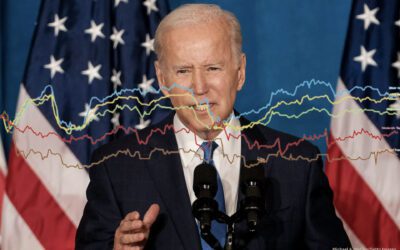The campaign has reached a tipping point where we believe the president has to offer a bold narrative, policies and choice if he is to win re-election and get to a substantial enough victory that enables him to govern and face the great challenges ahead. The first debate really did disrupt the race and presents a painful real-time test of what happens when the president tries to convince people of progress and offer a very modest vision of future change Voters are not looking for continuity but changes that help the average Joe.
Up until now, with Romney campaigning solely on Obama’s failures, a focus on America’s middle class was enough. But it is now – and there are enormous opportunities for the President to use this moment. In the first debate, Obama did not make a bold case for the bold policies he would offer in the next four years. In the Vice Presidential debate, Joe Biden thankfully struck blows on Romney’s authenticity, duplicity, truthfulness, coziness with the rich and disregard for the middle class, but he gave no hint of Obama’s plans for jobs and growth.
In debate dial-meters conducted by Democracy Corps for Women’s Voices. Women Vote Action Fund during the debate, Obama lost the attention of independents and unmarried women when he spoke about economic progress or talked about the progress of the last four years. With most of the President’s surrogates saying, “give him more time to finish the job” and with the President closing the debate almost making the same small offer, Romney got the opportunity to be heard as the voice of change.
Obama won most support when he said what he would do to make the economy better in the years ahead, but both Romney and Ryan spent much more time on that future and sounded like they had a real plan to make the economy better.
This imbalance is also reflected in the current 30-second ads the two campaigns are currently airing.
Obama:
Morgan Freeman narrating: “Every president inherits challenges. Few have faced so many. Four years later, our enemies have been brought to justice, our heroes are coming home, assembly lines are humming again. There are still challenges to meet: children to educate, a middle class to rebuild. But the last thing we should do is turn back now.”
Romney:
Mitt Romney to camera: “Let me tell you how I’ll create 12 million jobs when President Obama couldn’t. First, my energy independence policy means more than 3 million new jobs, many of them in manufacturing. My tax reform plan to lower rates for the middle class and for small business creates 7 million more. And expanding trade, cracking down on China, and improving job training takes us to over 12 million new jobs.”
But it is clear from this new national poll about presidential narratives that voters do not want a continuation; they want change. Indeed, they want bold change – and they are hoping that is what the president has in store. The survey shows the power of speaking about serious investment to build back the capacity of our economy, rather than just short-term deficits; investing in infrastructure and jobs; a major commitment to education; building the economy for the middle class with programs critical to its security; and addressing globalization that undercuts American living standards. These bold policy concepts increase voters’ openness to supporting Obama’s agenda.
This was distilled in a message that we tested on the eve of the debate – alongside Romney’s five point economic plan – and it dominated in the poll. Voters want to see us build on our strengths and values and focus on big changes that can make this country work for the middle class.
Voting for change
The starting point is voters’ strong desire to see major—not modest—changes in the country and the way we govern ourselves.

By more than a 2-to-1 margin (67 percent to 29 percent) voters say we need to make major changes to solve America’s problems – 62 percent agree with that strongly. And a large majority (57 percent) wants major changes in the way we govern ourselves.
Voters’ anger is not just with the economy, the crash, and special treatment for big banks. It is also about the nexus of Wall Street and Washington that makes leaders unaccountable to the citizenry and unable to bring the kind of change that is needed. This opens the door to positive possibilities to radically reform, downsize, and decentralize. A significant majority—70 percent—say that too much power is held in Washington and on Wall Street, which are unaccountable to people and that the solution is to break up big banks and empower communities. After decades of amassing power in institutions that became “too big to fail,” people want to feel that they are close to and engaged in decisions and institutions that affect their lives.
Asked to choose whether it is more important to limit the power of big banks and Wall Street in order to bring about change or to shift power from the federal government to bring about change, voters are evenly divided—45 percent say limit Wall Street and 48 percent limit Washington.
Responses to this question fall along predictably partisan lines—two-thirds of Democrats say it’s more important to limit Wall Street while 68 percent of Republicans say it is more important to shift power away from the federal government. However, it is important to note that a quarter of Republicans believe it is more important to limit Wall Street than the federal government—a position currently out of line with where the party leadership is on this issue.
Many of the analysts on the liberal side, Stan Greenberg among them, assumed that America was facing growing problems and may be reaching a tipping point that would require us to enter a new period with new kinds of policies. And some who disagreed with this view before the crash believe it now. But voters reject that view. They want big changes, but they believe we get there by building on America’s strengths. That is a very important part of the narrative, as no matter how failed and corrupt the process has become, the voters think we have what it takes to make major changes.

The Inescapable Economy
The context for supporting this bolder policy direction is the inescapable economy. Right now, almost 60 percent still give the economy a negative rating. And in a previous national survey, when we asked which was more concerning—going back to trickle down or continuing the current course– just 43 percent said we should continue the current direction. Voters are accepting an Obama vote because they think he will bring change, not continuity.
Because the economy is so challenging, Obama has had difficulty building a substantial lead in the presidential race. Most polls show that Romney and Obama are approaching parity on the economy – this poll shows Romney with a 2-point edge – but that still pulls the race closer. And when Romney talks not about how Obama has failed but lays out his own plans for the future, Obama does not dominate. Conservatives have plausible things to say about the future, particularly on spending and debt.
As presented in the graph below, voters believe the country faces big structural problems. Not surprisingly, jobs are at the top of the main concerns, but the structural problems also include the debt and deficits, as well as the inequality—43 percent say government debt and deficits is a top problem and a third (33 percent) say inequality is a top problem.

That is why a Romney narrative focused on the future and talking about change related to our current problems was plausible to voters.

Mitt Romney is strongest when he uses future-oriented economic messages to talk about the policy choices. Three-quarters (76 percent) agree with a Romney message articulating his 5-point plan to create 12 million jobs, become energy independent, improve education, cut the deficit, and cut taxes. This message also has strong intensity of support—half (50 percent) of voters strongly agree with this message. Had Romney battled for the future from the outset, he might be in a closer contest.
His messages about tax cuts and regulation to make business more competitive are less convincing to voters.
Obama’s bold future narrative
Obama’s big message at the convention provides a fairly successful narrative framework for a bolder policy offer – as presented in the survey. The message from Obama’s convention had a hopeful quality and was squarely aimed at the future—a future that is achievable but will require a strong commitment to core policy goals such as manufacturing, energy, education, national security, and the deficit.

In presenting the policy choices, Obama has an opportunity to call for serious policies that fulfill voters’ appetite for big change. We find that when the President presents a bold agenda for his second term, he finds a real audience—which includes the unmarried women and young voters who have thus far held back from supporting the President as strongly as they did in 2008—and women, who support Obama but who are less engaged overall.
In regression analysis, the strongest policy message predicting support for Obama’s agenda focuses on investments in the future as a way to break out of debt and joblessness. This message presents a significant opportunity for him to focus on the future and change the framework for spending and deficit reduction.
This message was the strongest driver for Obama’s agenda. Among all voters, almost two thirds (64 percent) agreed with Obama’s bold debt and investment message. This message speaks to long-term concerns about both jobs and the deficit and provides a more palatable Keynesian alternative to digging holes to shovel them back in again. This message was strong among key swing groups, including independents (straight independents and soft partisans).

Voters are also eager for bold policy changes on globalization. A message that puts the future of the middle class at the center of the trade narrative speaks to the concerns we hear in focus groups, particularly among non-college-educated respondents, about the devaluation of American jobs. Among all voters, more than two-thirds (68 percent) agree with this message, 41 percent strongly.

Obama’s other strongest policy messages emphasize second term policy changes in education, taxes, economic growth, and Medicare.
In regression analysis, Obama’s education message was very strong in driving voters to support his agenda at the end of the exercise. This message was also the strongest message among women (84 percent agree, 64 percent strongly), unmarried women (91 percent agree, 75 percent strongly), and young voters (87 percent agree, 70 percent strongly). It was also the second strongest Obama message among seniors—72 percent agree, 56 percent strongly— about as strong as the Medicare message.

Two-thirds of all voters (67 percent) agree with Obama’s call for tax reform and half do so strongly. This message emphasizes keeping taxes low for middle class families and raising rates on the wealthiest. Two-thirds (64 percent) of seniors agree with this message, 48 percent strongly.
Obama’s Medicare message also popped in regression analysis and is the strongest message among seniors (72 percent agree, 60 percent strongly). This is the second strongest message among unmarried women and the strongest among white, non-college-educated voters (78 percent agree, 57 percent strongly). It is also strong among independents (straight independents and soft partisans), with 80 percent agreeing. Importantly, this message performs favorably against Mitt Romney’s entitlement message:

Obama’s plan to reduce the deficit in a balanced way is strong among all voters, as—68 percent agree. —and was also shown to drive voters to believe that Obama presents a clear vision for the future and to restore the middle class in regression analysis. Among key swing groups—seniors and independents (straight independents and soft partisans)—69 percent agree with this message. It is also strong among Obama’s base voters who have been less engaged than they were in 2008. Three-quarters of young voters (76 percent) agree with this message, half strongly, and among unmarried women, 79 percent agree, half strongly.

After hearing messages back and forth, Romney maintains his marginal 2-point edge on the economy (48 percent to 46 percent). While Romney has a challenger’s advantage on “bringing a fresh approach to our problems,” he gains no advantage on the kind of change voters want to see. And these messages get Obama to an 8-point margin (50 percent to 42 percent) on which candidate does a better job of “presenting a clear vision of the future” and to a 6-point margin on which candidate would do a better job with “restoring the American middle class.”
Both of these—“presenting a clear vision of the future” and “restoring the American middle class” were areas where Romney made gains as a result of the debate. These powerful new policies and this message framework present an opportunity for the President to make major gains on these attributes.
A bolder future narrative?
The Obama campaign missed a major opportunity to advance this bolder vision during the debates. This research suggests, and we believe, that the president must offer a bold narrative, bold policies, and the clear choice for the future focused on restoring the middle class if he is to get a meaningful mandate that will enable him to govern and face the great challenges ahead. There are enormous opportunities for the president to use this moment to advance real change.
[1] This memo is mostly based on a national survey of 1000 likely 2012 voters conducted September 8-12, 2012 by Greenberg Quinlan Rosner for Democracy Corps. Unless otherwise noted, margin of error= +/- 3.1. This memo is also based on a multi-stage research project conducted by Greenberg Quinlan Rosner for Democracy Corps and Women’s Voices. Women Vote Action Fund. This project consisted of: four focus groups in Fairfax, VA and Columbus, OH among married and unmarried women, conducted September 24 and 25, 2012; a national survey of 800 likely 2012 voters with an oversample of 200 respondents in the Presidential battleground (PA, WI, MI, NC, NV, CO, NM, VA, FL, IA, OH, NH), conducted September 26-30, 2012; and dial groups held during the first presidential debate on October 3, with follow-up focus groups with unmarried women.




